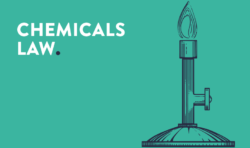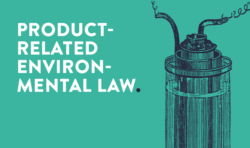This entails an enormous expansion of the quantitative stock of requirements from the previous 25 articles and 4 annexes in Directive 94/62/EC (Packaging Directive) to the planned 65 articles and 13 annexes in the Draft Packaging Regulation, available under: Text and Annexes). The proposal is thus fully in line with the EU’s ambitious and comprehensive sustainability regulation based on the principles laid down in the EU Green Deal and the Circular Economy Action Plan. With the publication and submission of the proposal to the EU Parliament and Council, the ordinary legislative procedure now begins. Based on previous experience with such comprehensive and revolutionary proposals by the EU Commission, it can be assumed that the legislative procedure will run for at least the whole of 2023 and that the new Packaging Regulation can therefore be expected to enter into force in 2024 at the earliest. Should there be similar controversies as with the Battery Regulation, which cannot be ruled out, the legislative process could take several years.
A. Transition from a Packaging Directive to a Packaging Regulation
As has been suspected for some time, the Packaging Directive will be converted into a Packaging Regulation. This is intended to bring about a far-reaching harmonisation of the legal requirements in all EU Member States (Art. 288 para. 2 TFEU) in order to counteract the current trend of increasing legal fragmentation. In this sense, the free movement of goods is explicitly emphasised in Art. 4 of the Draft Packaging Regulation, in order to prevent future obstacles to marketability based on individual national provisions. This currently applies in particular to the almost unmanageable patchwork of labelling requirements for packaging, but also to sustainability criteria such as the use of recycled materials.
Contrary to some expectations, the requirements for extended producer responsibility, namely registration, system participation and data reporting, remain largely anchored at national level, although there will be some harmonisation of the requirements in this regard. In addition, the respective national register authorities will be obliged to provide links to the register authorities in the other EU Member States on their websites, in order to provide assistance to the economic operators concerned (Art. 39 para. 1 subpara. 2 Draft Packaging Regulation). However, it remains permissible for individual Member States to provide for special national information requirements to be provided in the context of registration, if this is necessary for the use of the respective register (Article 39 para. 5 Draft Packaging Regulation).
Finally, as in the Draft Battery Regulation, the Commission is to be granted comprehensive powers to adopt delegated and implementing acts. Superficially, this serves to avoid overloading the text of the regulation itself with technical details of the implementation of the requirements, although of course only the implementation-relevant details fill a legal act with life and clearly show the companies concerned what is expected of them.
B. Scope of application and definitions
The scope of application of the Packaging Regulation remains as comprehensive as it already is under the Packaging Directive. All types of packaging are covered as waste, irrespective of the packaging material and the area of use or the point of generation as waste (Art. 2 para. 1 Draft Packaging Regulation).
However, a change is emerging in the classification of packaging types, the effects of which on the current German legal situation cannot yet be conclusively assessed. According to Art. 3 para. 1 of the Draft Packaging Regulation, the packaging types of sales packaging, grouped packaging and transport packaging remain unchanged. However, in the Draft Packaging Regulation, the e-commerce packaging (Sec. 3 para. 1 no. 1 letter b) VerpackG), which in Germany has so far been classified as a sub-category of sales packaging, is classified as a sub-category of transport packaging. In addition, the distinction between packaging that is subject to system participation and packaging that is not subject to system participation, which has been familiar from German law up to now, is not directly applied in the Draft Packaging Regulation, so that here, too, a new structural change with regard to the German legal situation could be imminent.
In addition, the role definitions in Art. 3 para. 5 to para. 15 of the Draft Packaging Regulation are considerably expanded and also changed in detail compared to the current legal situation. It remains to be seen how the structure of obligations will ultimately be distributed among the various economic actors, in order to determine the concrete program of obligations. Surprisingly, operators of electronic marketplaces have not yet been included as relevant economic actors, even though they play an increasingly important role in the processing of sales transactions. However, it should be noted that the inspection obligations of the operators of electronic marketplaces under Sec. 7 para. 7 2nd sentence and Sec. 9 para. 5 2nd sentence VerpackG remain in force for the time being.
The enormous increase in the complexity of the matter is also evident with regard to the rapidly increasing number of definitions, from 12 under the Packaging Directive to 60 in the Draf Packaging Ordinance Regulation.
C. Sustainability requirements
In addition to the idea of harmonisation already mentioned several times, the new sustainability requirements constitute the core of the Draft Packaging Regulation. For the first time, comprehensive and generally binding provisions for the design of packaging are introduced, so that the new regulatory regime no longer only focuses on the waste phase, but also on the design and production of packaging as steps relevant for the protection of the environment. Some of the planned sustainability requirements are briefly presented below.
- The existing substance restrictions remain in place. It is also made clear (by way of declaration) that the substance restrictions from Annex XVII REACH apply to packaging.
- Recyclability requirements (“design for recycling“) for packaging are to be introduced on a staggered basis from 2030. Details on the question of which packaging is considered recyclable will be defined by the EU Commission in a delegated act.
- Likewise, from 2030 onwards, certain minimum recyclate percentages are to apply to plastic packaging, whereby different limit values are planned for different types of packaging.
- By setting requirements for the mandatory minimisation of packaging with regard to its weight and volume, the material consumption and thus the amount of packaging waste is to be reduced. In principle, the packaging should be designed to be as small and simple as possible.
In future, the manufacturer must be able to prove compliance with these requirements by means of technical documentation. Consequently, the Packaging Regulation will lead to a relevant increase in administrative tasks, which could possibly inhibit innovations on the business side.
D. Labelling
With Art. 11 of the Draft Packaging Regulation, the EU Commission would like to effectively counter the increasing development of a patchwork of labelling laws at the level of the Member States by introducing uniform labelling requirements. In terms of content, this concerns the material composition of packaging on the one hand and information on reusability on the other. In addition, manufacturers and importers will in future have to affix their name and contact details, as well as a serial or batch number. The labelling must always be affixed to the packaging itself. Digital labelling via a QR code is only envisaged as a real alternative with regard to the manufacturer’s labelling (Art. 14 para. 6 Draft Packaging Regulation), whereas information on reusability must always be provided on the packaging and only additional information must be displayed via a QR code or another type of digital data carrier.
Here, too, the application of the law is again complicated in several ways by the fact that the actual labelling requirements must first be defined by the Commission in an implementing act. This means that concrete operational preparation for the new labelling requirements remains impossible for the time being, as the relevant details must first be regulated in the said implementing act. This must be published at the latest 18 months after the Packaging Regulation enters into force and the companies concerned then have 42 or 48 months from the entry into force of the Packaging Regulation to implement these requirements. It can therefore be assumed that the existing patchwork will remain in place for the time being and that implementation of, for example, the French labelling requirements in particular for the French market cannot be dispensed.
In this context, it should also be mentioned that Member States may introduce additional labelling for packaging if this packaging is involved in a system for fulfilling extended producer responsibility or a deposit system. However, this labelling must not be misleading, whereby the labelling with the “Green Dot” is assumed to be misleading (cf. recital (49)).
E. Conformity assessment
Also completely new in packaging law is the obligatory implementation of a conformity assessment procedure according to Art. 33 in connection with Annex VII Draft Packaging Regulation. Here, the conformity of the packaging with all sustainability and labelling requirements is to be assessed and documented accordingly. In terms of process, the implementation of a so-called internal production control in the sense of Modul A Decision No. 768/2008/EC with some modifications in Annex VII Draft Packaging Regulation is envisaged.
Consequently, in future an EU declaration of conformity will also have to be drawn up for packaging, the model for which is contained in Annex VIII of the Draft Packaging Regulation. The relationship of the packaging declaration of conformity to the declaration of conformity for the contained product is regulated as usual in the sense that only one declaration of conformity has to be drawn up.
In contrast, there will be no separate CE marking obligation for packaging according to the present draft. According to recital (80), the potential for misinterpretation with regard to the CE marking required for the product itself would be too high, so that in the interest of transparency, an independent CE marking of the packaging is to be dispensed with on the basis of packaging law requirements.
F. Duties according to role
In light of the numerous additional obligations, particularly in the area of sustainability requirements, new tasks will naturally also be imposed on the economic operators concerned.
The main burden here will lie with the manufacturer of the packaging (i.e. as a rule still the first distributor of a sales unit consisting of goods and packaging), which is regulated in detail in Art. 14 Draft Packaging Regulation. In addition, importers (Art. 16 Draft Packaging Regulation) and distributors (Art. 17 Draft Packaging Regulation) will also have extended obligations in future. Both must check certain aspects and may not place packaging on the market if infringements are identified.
With regard to packaging already placed on the market, manufacturers, importers and distributors are equally subject to comprehensive obligations to take corrective measures and to notify the authorities if infringements of applicable requirements are identified. In this context, the Draft Packaging Regulation even provides for a take-back and a recall of packaging if this is appropriate in the individual case. Ultimately, this creates a regulatory regime that is comparable, for example, to that already in place under Directive 2011/65/EU (RoHS).
Conclusion and outlook
In short, the Draft Packaging Regulation provides for a considerable extension of existing obligations, which will probably lead to an enormous implementation effort for the companies concerned. In addition, no provision is made for de minimis limits that would relieve manufacturers of individually designed packaging or small and medium-sized enterprises in general, although these groups in particular are threatened with almost insurmountable hurdles.
In light of this, all affected companies should not only follow the legislative process with interest, but also use every opportunity to voice their positions and concerns regarding the practicability of the planned requirements in the legislative process.
Do you have any questions about this news or would you like to discuss it with the author? Please feel free to contact: Michael Öttinger






